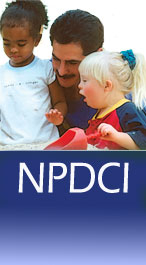NPDCI has invited two colleagues to share how they are involved in PD on RtI in early childhood in their state of Illinois. Lynette Chandler, Professor and Program Coordinator for Special Education in the Department of Special and Early Education at Northern Illinois University, shares information from the preservice perspective and Robin Miller-Young, Student Services Coordinator at Prairie Children Preschool, from the inservice perspective. We invite you to join their conversation.
Response to Intervention in Early Childhood (RTI-EC) Discussion
Illinois recently updated the Professional Teaching Standards and identified a subset of knowledge and skill elements across the content areas that address RtI. Preservice programs are required to identify courses, assessments, and clinical experiences that address these RtI standards. In addition, there are many programs in Illinois that are implementing RtI at the prekindergarten level. Our teacher candidates should be prepared to work effectively within these programs during student teaching and as early childhood teachers. As a result, RtI must be a prominent part of our preservice program. As we planned to infuse RtI within our program we asked a number of questions:
- What are the critical features of RtI that we want to teach? How does RtI fit within DAP?
- What resistance and myths or misconceptions about RtI do we need to address?
- When will RtI be taught? Will it be infused across courses, within one or two courses, or both?
- Who will be expected to address RtI? Will all faculty be experts or a single faculty?
- How will we assure that teacher candidates have field experiences with RtI?
Teachers and other professionals who are already working in early childhood settings have unique professional development (PD) needs that must be considered in order to move into successful implementation of RtI practices. For these colleagues, the PD activities need to build consensus around the beliefs, attitudes and values of moving into RtI practices, increase knowledge such as information on evidence-based assessment tools and interventions, and increase skills for applying this new knowledge, such as collaborative, data-based decision-making for specific individual children and groups of children. Program leaders also need to know how to how to rearrange and align program structures, plus design and integrate new structures if necessary, so that RTI practices can be established and institutionalized, to support their staff in moving successfully through the change process, and to communicate new performance expectations and methods for holding staff accountable for meeting those expectations. Addressing these staff learning targets with well-designed and motivating PD activities will support implementation of the RtI key components outlined in the NPDCI RtI Concept Paper.
Questions:
- How have other preservice programs incorporated RtI within the early childhood curriculum (see questions above)?
- Are there specific resources that have been helpful?
- Does your program have an ILT that can develop a strategic plan to move into RtI practices with the necessary stakeholders? If not, how can you develop such a team? What components might your plan include?


Comments
A Helpful Resource
RtI Concept Paper Resources